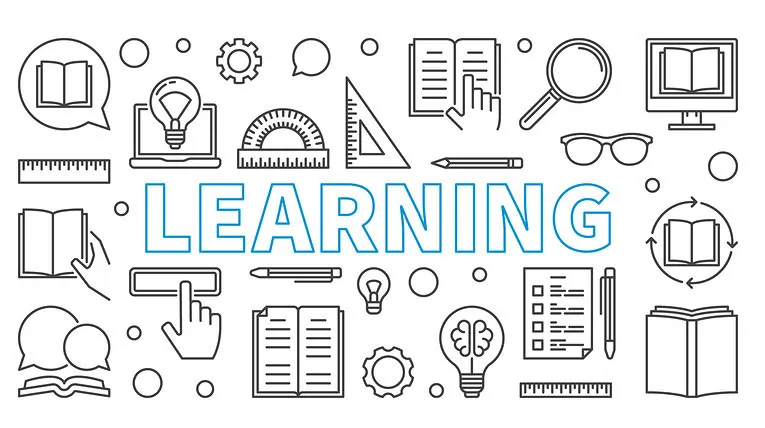Why is it important to understand learning styles and how can they influence the way you teach or coach others?
Skillshub outlines Kolb’s 1984 model of experiential learning styles to highlight the involvement that differing learning styles should have in all types of learning and development.
Why Are Learning Styles Important?
The whole concept of learning styles is not new. The Greeks recognised that different people learn in different ways, and over the years we have seen the application of learning categorised so that we can learn in the way that is not only the most convenient and comfortable for us, but also the way that enhances our appreciation of the ideas learned.
It has needed to evolve over the years too. Modern-day learning is increasingly being conducted on an eLearning platform and the way people learn on these systems and the content that we provide for them needs to be thought through to cater for different learning styles.
We need to understand learning styles so that, if we are coaching or mentoring others, we structure the teaching in a way that is conducive to the individual(s) and their abilities to absorb information.
If we get it wrong, it can impact the learner negatively and reduce the absorption of the learning material. If coaches or mentors communicate with us in a way that is different to how we learn, the methodologies may not be favourable or helpful to us to action in our own lives.
It’s therefore crucial to take the time to understand the differing styles and their implications on how individuals absorb information and use this to inform the structure and type of teaching provided.
Kolb’s Learning Cycle Model
The learning cycle that David Kolb analysed in his model published in 1984 involves four stages, namely: concrete learning, reflective observation, abstract conceptualisation and active experimentation.
In Kolb’s model, effective learning can be seen when the learner progresses through the cycle. The learner can also enter the cycle at any stage with logical sequence.

What Are Kolb’s Learning Cycle Stages and Why Are They Important?
1. Concrete experience
The first stage of Kolb’s learning cycle is concrete learning or concrete experience, where the learner encounters a new experience or reinterprets an existing experience.
This could be where the learner is exposed to a new task or a new way of carrying out a project, in a way they haven’t seen before.
2. Reflective observation
This is followed by the next stage, reflective observation, where the learner reflects on the experience on a personal basis.
For many people, this is where the metamorphosis from seeing and doing to reflecting can embed the learning into real-time absorption of materials and methodology.
It could be where a person is shown how to accomplish a goal and then looks at how it could be applied in differing circumstances.
3. Abstract conceptualisation
Following reflective observation is abstract conceptualisation, where learners form new ideas, or modify current abstract ideas, based on the reflections that arise from the reflective observation stage.
They now have the chance to see how the ideas learned previously can be applied in their real world. The concepts they see can be altered by the results they have seen obtained in observing the ideas formulated in previous stages.
4. Active experimentation
Then, there’s the active experimentation stage. This is where the learner applies the new ideas to their surroundings to see if there are any modifications in the next appearance of the experience.
By actively experimenting with the whole concept of visible action, we learn to associate what we have experienced with new ideas and innovations.
This second experience becomes the concrete experience for the beginning of the next cycle, beginning at the first stage, and this process can happen over a short or long time.

Learn How To Create Personal Learning Journeys For FREE!
What are KOLB’s Four Experiential Learning Styles?
Knowing and understanding these learning styles helps us to develop learning experiences in ways that enhance their individual skill sets and capabilities. Kolb takes the four stages and builds on them to create four overall learning dimensions.
There are various factors that can influence and determine an individual’s preferred learning style, including their innate cognitive functioning but also social environment, previous experiences and more.
Kolb’s four learning styles:
Diverging (feeling and watching)
These people see things from differing perspectives. They prefer watching to doing and are able to use their imaginations to be creative in their overall learning styles. This style is so-called due to these individuals learning best in instances where they are required to gather information or generate new ideas.
Learning characteristics:
• Concrete experience
• Reflective observation
Assimilating (watching and thinking)
These people are able to explore and analyse models logically and are more interested in concepts and tasks than in relationships or working in groups. Examples of preferred learning situations for these types of learners include lectures, readings and individual learning that gives them time to analyse and think rather than discuss.
Learning characteristics:
• Abstract conceptualisation
• Reflective observation
Converging (doing and thinking)
These people are good problem-solvers and are seen as being practical in their analyses of ideas and tasks. They tend to converge on the answers they want and prefer learning activities like technical tasks that involve finding solutions rather than interpersonal or group learning..
Learning characteristics:
• Abstract conceptualisation
• Active experimentation
Accommodating (doing and feeling)
These people tend to be more practical in their outlook on learning, and they like to see problems from an intuitive point of view. They may rely more on gut feeling andlike new-found challenges that involve taking an experiential approach.
Learning characteristics:
• Concrete experiences
• Active experimentation

How Can We Apply Learning Styles When Coaching or Mentoring Others?
The concepts developed by David Kolb can be used to initiate new ideas in learning sessions in three ways:
1. Target more specific learning sessions for people we are working with
2. Design training and coaching exercises that link up with the specific way our learners absorb information
3. Personalise any learning intervention for people in line with the four stages listed above
By providing different learning initiatives, we increase the chances of the person assimilating the information effectively and helping them create ideas that may have been inaccessible if the learning had been in a style that didn’t suit their preferences.
One way to achieve this online is through off-the-shelf eLearning content as well as bespoke eLearning programs that cater for different needs and learning styles.
You can utilise off-the-shelf content for sharp 1 to 5-minute sessions, in combination with bespoke elearning content to provide a blended solution to cater for different learning styles and preferences.
As an eLearning company, Skillshub is committed to creating efficient and impactful learning experiences. Contact us to find out more.
Speak to our team today for a free demo or run-through of our eLearning content.














